Carl E. Olson's Blog, page 210
July 3, 2012
10 Things You Should Know About the American Founding
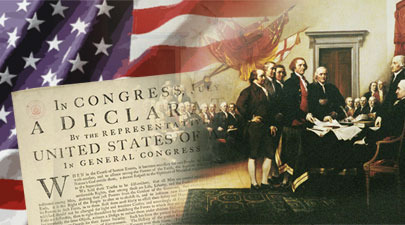
10 Things You Should Know About the American Founding | Bradley J. Birzer | Catholic World Report
236 years after Congress declared independence from the British Empire through the Declaration of Independence, it's well worth reminding ourselves of a number of things about the Founding era.
In 1776, numerous individuals, families, committees, congregations, localities, and states had already proclaimed their independence, and almost no remaining imperial structure could continue to operate with any legitimacy in what would very soon become thirteen states. By the very beginning of July of 1776, it became clear that members of Congress would have to catch up quickly to the more activist localities, hoping to rein in the movement of independence before it got out of hand and splintered from lack of central direction and a coherent philosophy.
While the passage of the Declaration came on July 4, the members of the Second Continental Congress did not sign the venerable document until August 2.
Here are ten facts about the American founding that are worth knowing and contemplating as our country celebrates its independence on the Fourth of July.
1. At the time of the passage and signing of the Declaration, roughly 2.15 million persons lived in the 13 colonies. Of those not enslaved, the vast majority was of Anglo-Saxon-Celtic descent and nearly 100% were Protestant. The “fierce spirit of liberty is stronger in the English Colonies probably than in any other people on the earth. . . . Religion, always a principle of energy, in this new people is no way worn out or impaired,” Edmund Burke stated publically in 1775. “The people are Protestants; and of that kind which is most adverse to all implicit submission of mind and opinion.”
2. Within Parliament and English governance, a debate had raged regarding the nature of the British Empire itself.
Indy Star publishes major puff piece about CEO of Indiana's Planned Parenthood
I've read some obvious puff pieces in my life. But a June 22nd piece in the Indianpolis Star titled, "Planned Parenthood's Betty Cockrum is a persistent fighter", surely deserves some sort of prize for "Glowing, Adoring, and Worshipful Hagiography of Those Committed to Killing the Unborn" (HT: Sandra Miesel). Lest you think I am being hyperbolic, check out some of these lines about Betty Cockrum, the CEO of Planned Parenthood of Indiana:
• "For Cockrum, abortion is only one part of her mission to ensure that women have reproductive rights and access to health care."
• "To be fair, it's a tough time for anyone at Planned Parenthood's affiliates nationwide. But Cockrum -- a 59-year-old, twice-divorced mother of two and grandmother of one -- may have it toughest of all. Of all the nation's Planned Parenthood CEOs, she is thought to be the only one who has been harassed repeatedly and savagely on a very personal level."
• "Earlier this spring over breakfast in Bloomington, an aide had no qualms telling Cockrum a ribald joke with a reporter present, and Cockrum had no qualms chuckling at it. She wore a bracelet that said: 'Don't make me release the flying monkeys.'"
• "That's another thing about Betty Cockrum: She's funny."
• "During the presentation, Fichter and Cockrum were placed at opposite ends. The subject of 'interfacing with the opposition' was broached, and Cockrum was quick to point out the meanness of the Intercessors. It's useful to have enemies so over the top, and Cockrum is quick to bring them up in conversation."
The entire tone of the piece is one of unquestioning adoration. Much is made of Cockrum's difficult childhood. Well, at least she had a childhood, unlike the tens of thousands of babies who have been aborted during her comfortable watch (she makes $150,000 a year). Much is made of the verbal taunts allegedly thrown her way by pro-life activists. Not to condone verbal assaults or harrassment, of course, but being verbally assaulted has to be so much better than being torn limb to limb from the womb. Sure, being called names is hardly enjoyable, but if you are going to sign up to be a major player in the nation's largest abortion provider, you certainly should expect some opposition. Yet the reporter, Will Higgins, seems to think that being given the cold shoulder by political opponents is somehow the epitome of uncivilized nastiness:
The 2012 Napa Institute Conference
The Napa Institute’s 2nd Annual Conference, “Catholics In the Next America”, will be held from Thursday, July 26th to Sunday, July 29th. The event will feature an impressive array of speakers and participants, including Archbishiop Charles J. Chaput, O.F.M. Cap., Bishop Robert C. Morlino, Bishop Robert F. Vasa, Bishop Salvatore J. Cordileone, Rev. Robert Barron, Rev. Joseph D. Fessio, S.J., Rev. Norbert Wood, O.Praem., Peter Kreeft, Hugh Hewitt, Frank J. Hanna, III, Dr. Tim Gray, Dr. Elizabeth F. Yore, and Leonard A. Leo.
The event is hosted by Rev. Robert Spitzer, S.J., the President of Napa Institute, and Timothy R. Busch, Esq., who is CEO of the Institute; Fr. Spitzer will also be a featured speaker at the conference.
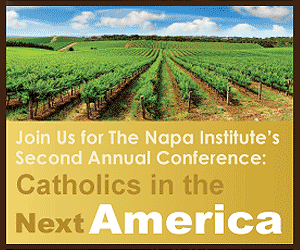 The three intertwining themes of the 2012 conference, says Busch, are faith and reason, Catholic education and religious freedom. “In the wake of HHS mandate”, Busch notes, “religious freedom is certainly the topic of the day. However, it’s not the only pressing issue of the day. The Church is facing the departure of our young adults from not only from the Catholic faith, but from belief in God in general. So Fr. Spitzer will lead the charge on reason and faith at the conference.” Busch also points out that Catholic education is “under siege at the parochial level particularly in urban centers”, with numerous schools closing each year. In light of that challenging fact, he says, “we need to address new school models that will work.”
The three intertwining themes of the 2012 conference, says Busch, are faith and reason, Catholic education and religious freedom. “In the wake of HHS mandate”, Busch notes, “religious freedom is certainly the topic of the day. However, it’s not the only pressing issue of the day. The Church is facing the departure of our young adults from not only from the Catholic faith, but from belief in God in general. So Fr. Spitzer will lead the charge on reason and faith at the conference.” Busch also points out that Catholic education is “under siege at the parochial level particularly in urban centers”, with numerous schools closing each year. In light of that challenging fact, he says, “we need to address new school models that will work.”
The pressing topic of religious liberty will be addressed in Thursday’s presentations, including those by Archbishop Chaput and Bishop Morlino. Catholic education will the focus of Friday’s events, including a talk by Fr. Barron (who was recently appointed rector and president of the University of St. Mary of the Lake and Mundelein Seminary by Francis Cardinal George), Fr. Spitzer, and Frank Hanna III. Saturday’s schedule includes presentations by Fr. Spitzer, Fr. Barron, and Dr. Kreeft on faith and reason, a topic all three men have spoken and written about extensively for both academic and popular audiences. Breakout sessions on Thursday, Friday, and Saturday will include a variety of topics and presenters.
Challenges and Encouragement
The varied and difficult challenges posed by secularism must be addressed directly, says Fr. Spitzer, which is a primary reason for the formation and work of the Napa Institute. “Challenges to religion and the Catholic Church surround us”, he says. “Stephen Hawking, Richard Dawkins, and many other atheists are undermining the faith of our youth and adults; the President of the United States insists on forcing our religious institutions to administer artificial contraception against Church teaching; our young people, though optimistic and concerned for others, are becoming increasingly morally relativistic; the media almost luxuriates in scandals which give only a slice of the immensely good reality accomplished by our Church.”
A driving idea behind the conference is that Catholic leaders—whether clergy or laity—need to learn more about these pressing issues from leading thinkers, authors, theologians, and philosophers. “If we are to stand up for our faith in the public square,” Busch states, “we must be educated. The Institute focuses on substance of our Faith by bringing together theologians, philosophers and the shepherds of our church for instruction, discussion, and mutual encouragement.”
The Napa Institute was founded as a response to the call for a New Evangelization, intended to help Catholics address the challenged posed by the “next America”—one that is increasingly secular and even anti-religious. A key component of the New Evangelization, as articulated by Blessed John Paul II and Pope Benedict XVI, explains Fr. Spitzer, “is the active participation by our lay leaders. We expect our priests, religious, and catechists to respond to the challenges put to faith and morals in our day, but we minimize our effectiveness when we do not prepare our lay leaders to do this for the organizations, educational boards, governmental agencies and political arenas over which they have considerable influence.”
Worship and Spiritual Edification
To that end, the Napa Institute Conference focuses not only on reason and teaching, but also on the spiritual life and worship. Participants will be able to spend time in Eucharistic adoration, available around the clock in the Chapel of Our Lady of the Grapes, and to participate in prayer and worship each day. On Saturday evening there will be Benediction of the Blessed Sacrament, followed by Solemn Vespers and a Sacred Music Concert, featuring St. Dominic’s Choir. And the conference will conclude on Sunday morning with four liturgies: a Solemn Pontifical Celebration of the Holy Sacrifice of Mass in the Extraordinary Form celebrated by His Excellency, Most Reverend Salvatore J. Cordileone; Holy Sacrifice of the Mass (Novus Ordo); Divine Liturgy of St. John Chrysostom (Byzantine Rite); and Holy Sacrifice of the Mass (Novus Ordo, Latin). The music at the High Mass will sung by the Pacific Collegium choir.
Those who are unable to attend, says conference director Luke Miller, will be able to take advantage of the presentations via television, radio, and internet. A crew from Eternal Word Television Network (EWTN) will be at the conference to film keynote sessions, selected breakout sessions, and some of the liturgical services. “Following the conference”, says Miller, “highlights from the Napa Institute will be broadcasted on the EWTN Global Catholic Network. We are truly blessed to be working with the leader in Catholic media as we equip Catholics ‘in the next America.’” Parts of those broadcasts will also be made available on YouTube. In addition, broadcaster Al Kresta will be on site, hosting his Ave Maria Radio program, “Kresta in the Afternoon”, live from the conference.
Last year’s conference, Miller says, was a great success, and he expects close to three hundred participants at this year’s event. For more information or to register, visit the Napa Institute website (www.napa-institute.org) or call 949-474-7368 (ext. 216).
Being Reasonable About Faith and Science
Being Reasonable About Faith and Science | William L. Patenaude | Catholic World Report
The recent “Modern Science/Ancient Faith” conference explored the oft-misunderstood relationship between science and Catholicism.
“Though faith is above reason, there can never be any real discrepancy between faith and reason. Since the same God who reveals mysteries and infuses faith has bestowed the light of reason on the human mind, God cannot deny himself, nor can truth ever contradict truth. Consequently, methodical research in all branches of knowledge, provided it is carried out in a truly scientific manner and does not override moral laws, can never conflict with the faith, because the things of the world and the things of faith derive from the same God. The humble and persevering investigator of the secrets of nature is being led, as it were, by the hand of God in spite of himself, for it is God, the conserver of all things, who made them what they are.” — Catechism of the Catholic Church, par 159.
Portsmouth, RI —Can faith exist in a world where science is demonstrating ever more details of creation and the evolution of human life? Is there a place for science among those who believe that the Book of Genesis is God’s inspired revelation?
Such questions anchored “Modern Science/Ancient Faith,” a conference sponsored by the Benedictine-run Portsmouth Institute, housed in Rhode Island’s Portsmouth Abbey School, on June 22-24. The event brought together some ninety scientists, theologians, philosophers, clergy, lay faithful, and skeptics—or some mix of the above—to explore the dialogue between the natural sciences and Christianity.
While few participants expressed difficulties with the coexistence of faith and reason, the how of this coexistence wasn’t always in agreement. Some demanded a decidedly scientific approach to questions of beginnings. Others championed a more literal understanding of Genesis. This made for polite but fiery discussions that began in the early summer’s heat of the Abbey’s grounds and now continue online.
After opening with Adoration and the Rosary, the first talk was a review of the Galileo affair by Rev. Dom Paschal Scotti, O.S.B. His presentation set an amicable tone for the conference by demonstrating Christianity’s affinity for the natural sciences. The priest made clear that the driving issue at play in Galileo’s run-in with the Church was not an inherent fear of science. Rather, most Catholic theologians and scientists working with Galileo fought with the astronomer to keep scientific observations in their proper arena.
And as in the modern debates about issues such as evolution or climate change, what further inflamed the Galileo saga were the nuances of human sin, politics, and egos. According to Fr. Paschal, relations between Galileo and the Church were complicated by issues such as tensions between the Dominican and Jesuit orders; secular pressures on Pope Urban VIII; Galileo’s often aggressive approach and sometimes sarcastic writings; and the effects of Protestantism’s demands for sola scriptura.
Fr. Paschal noted that, human failings notwithstanding, an incarnational faith by its nature intersects with the natural world and, thus, the sciences—and this may explain why Christianity was the fertile ground from which the natural sciences could take root.
July 2, 2012
Bishop Gerhard Ludwig Müller named new head of CDF
From Whispers in the Loggia:
Anticipated for months, it's finally official -- at Roman Noon this Monday, the Pope named Bishop Gerhard Ludwig Müller of Regensburg as prefect of the Congregation for the Doctrine of the Faith, accepting the retirement of Cardinal William Levada a year after the highest-ranking American in Vatican history reached the canonical age of 75.
With the appointment of the 64 year-old theologian -- the editor of the still-in-production "Complete Works" of Joseph Ratzinger -- Germans now occupy two of the Vatican's top three posts: a level of dominance that, until now, has been enjoyed only by Italians.
Made an archbishop on the move, by seniority Müller will be the first cardinal created by Benedict at his next consistory, which could come in Spring 2013, barring one exception: namely, should the pontiff appoint a new Secretary of State before then who hasn't already received the red hat.
Early last month, the most definitive sign of the impending appointment came when the Pope appointed Müller as a member of the Congregation for Catholic Education and the Pontifical Council for Christian Unity -- a combination that, among the Curia's senior members, has been held only by Levada. As early as January, however, German reports noted that the bishop had been taking refresher courses in Italian.
Once the "supreme" dicastery of the Roman Curia, the roots of the modern-day CDF date to 1542, when Pope Paul III established it as the Sacred Congregation of the Universal Inquisition. In the post-Vatican II reforms of Paul VI, the "Holy Office" was given its current name, with a rebooted mandate to encourage and promote theological study beyond its traditional function as the global church's lead guardian of orthodoxy.
A priest of Mainz, the new prefect spent most of his priesthood as a theology professor in Munich before his appointment to Regensburg in 1992. He has served as a member of the congregation since 2002.
. Bishop Müller, by the way, is the author of Priesthood and Diaconate: The Recipient of the Sacrament of Holy Orders from the Perspective of Creation Theology and Christology, published in English by Ignatius Press in 2002.
July 1, 2012
New: "Autobiography of a Hunted Priest"
Now available from Ignatius Press:
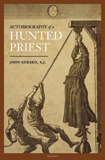 Autobiography of a Hunted Priest
Autobiography of a Hunted Priest
by John Gerard, S.J. | Foreword by James V. Schall, S.J.
• Also available in Electronic Book Format
Truth is stranger than fiction. And nowhere in literature is it so apparent as in this classic work, the Autobiography of a Hunted Priest. This autobiography of a Jesuit priest in Elizabethan England is a most remarkable document and John Gerard, its author, a most remarkable priest in a time when to be a Catholic in England courted imprisonment and torture; to be a priest was treason by act of Parliament.
Smuggled into England after his ordination and dumped on a Norfolk beach at night, Fr. Gerard disguised himself as a country gentleman and traveled about the country saying Mass, preaching and ministering to the faithful in secret - always in constant danger. The houses in which he found shelter were frequently raided by "priest hunters"; priest-holes, hide-outs and hair-breadth escapes were part of his daily life. He was finally caught and imprisoned, and later removed to the infamous Tower of London where he was brutally tortured.
The stirring account of his escape, by means of a rope thrown across the moat, is a daring and magnificent climax to a true story which, for sheer narrative power and interest, far exceeds any fiction. Here is an accurate and compelling picture of England when Catholics were denied their freedom to worship and endured vicious persecution and often martyrdom.
But more than the story of a single priest, the Autobiography of a Hunted Priest epitomizes the constant struggle of all human beings through the ages to maintain their freedom. It is a book of courage and of conviction whose message is most timely for our age.
John Gerard, S.J., was a Jesuit missionary priest in Elizabethan England when the Catholic Church was under heavy persecution by the government. The footnotes provided by the translator prove the absolute facts of his account in this book, which is corroborated even by the files of the Elizabethan secret police.
"In my early years in the Society of Jesus, I recall that this book was read at my table... On first listening to it, the book also struck me as describing a persecution of Catholics that could not happen here. One is no longer quite so sure. It may, be a very up-to-date book in its own way."
— Fr. James V. Schall, S.J., from the Foreword
The Vocation To Life: Why Christians are the True Humanists
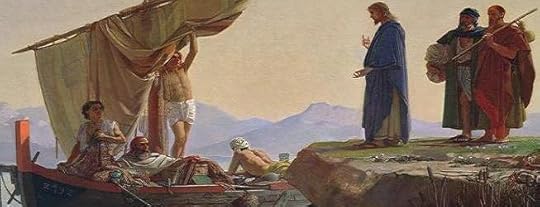
The Vocation To Life | Fr. Charles Klamut | Homiletic & Pastoral Review
Like the apostles, I first said “yes” to Christ because of the total answer he provided for my human need, and only within this context did a specific vocation to serve as a priest gradually begin to reveal itself.
A few years ago, during a retreat for priests, Msgr. Lorenzo Albacete shared with us a story of his friend, Cardinal Angelo Scola. When asked by a journalist about the shortage of vocations to the priesthood in Italy, Scola replied that the problem stemmed from a deeper crisis: the problem, he said, was that life itself is no longer seen as a vocation.
Albacete reflected on this insight for the next few days, calling it very important, explaining to us what he thought Scola was getting at. The call to life is something given, something prior to our thoughts and schemes. It’s even prior to the particular vocations like marriage and the priesthood. We did not choose it; it’s just there. Within the human heart is a cry for life, real life, eternal life: life properly so-called. The New Testament, using a more nuanced Greek vocabulary than our modern-day English, used multiple words for “life:” bios to refer to material, physical life; zoe to refer to a more comprehensive, metaphysical, all-encompassing life, such as the kind promised by Jesus. The heart cries for infinite life, not just bios, but zoe. The heart cries for a freedom and happiness which, alas, we cannot give ourselves. In short, the heart cries for God.
This call to life which our heart always hears, even if we don’t (affected as we are by reductionist cultural forces), is awakened and answered by the exceptional presence of Christ. Jesus Christ is the infinite made visible and historical, the answer to the heart’s cry for life: “I came that they might have life, and have it more abundantly” (John 10:10).
Albacete spoke of the experience of the first apostles as recorded in the Scriptures. For them, Christ provoked a total human awakening, provided a total human answer, not just a spiritual one. From Christ’s first question to John and Andrew, “What do you seek?” he was engaging them on the level of life itself. Their response to his question was: “Where are you staying?” This suggests their longing for a lasting place to be with him, to share life with him. Only with time would the call of Christ reveal itself in its ecclesiastical specifics, as a logical extension of the vocation to life.
A number of priests at the retreat were puzzled that so much time was spent on the general theme of the call to life, and they were wondering when the specifics of the priesthood, such as the Eucharist, would be addressed. Albacete insisted that the vocation to life, and subsequently, to Christianity, provided the solid foundation on which the vocation to the priesthood is built. Without the former, the latter will be unstable and will eventually crumble, as we have all sadly seen so many times in recent years.
June 30, 2012
The response of God to the mysteries of evil and death
A Scriptural Reflection on the Readings for Sunday, July 1, 2012, the Thirteenth Sunday in Ordinary Time | Carl E. Olson
Readings:
• Wis 1:13-15; 2:23-24
• Ps 30:2, 4, 5-6, 11, 12, 13
• 2 Cor 8:7, 9, 13-15
• Mk 5:21-43 or Mk 5:21-24, 35b-43
“If God did not create evil, why does it exist? If God did not make death, why do we die?”
These are difficult questions, the sort of questions sometimes asked by those who doubt, or even reject, the existence or goodness of God. Seeing a young child die of a rare illness, watching a loved one consumed by cancer, or reading of a stranger senselessly beaten and murdered—each of these can be a painful question mark inscribed deeply on our souls. Is there is a sensible response to such senseless pain and death?
To the question of evil, the Catechism states, “as pressing as it is unavoidable and as painful as it is mysterious, no quick answer will suffice” (par. 309). It further says the Christian faith, in its entirety, is an answer to this troubling question, beginning with the belief in the goodness of creation and culminating in the call to share in the blessed life, a call that is an invitation to creatures possessing and exercising free will. God is love, his creation is good, and his creatures have the freedom to love or to reject him. These are essential truths about the nature of things, and they start us on the road, however steep, to understanding.
“God did not make death,” insists the author of the Book of Wisdom in today’s first reading, nor rejoices in the death of the living. On the contrary, God created everything that exists simply so it could be. The author refers to the absence of a “destructive drug” among the “wholesome” creatures of the world. This drug is sin, which came into the world through the envy of the devil—the adversary or accuser who seeks to destroy God’s creatures and creation.
This “envy” is likely a reference to the temptation in the Garden of Eden. “Behind the disobedient choice of our first parents lurks a seductive voice,” notes the Catechism, “opposed to God, which makes them fall into death out of envy” (par. 391). Envy might seem at first a small matter, but St. Augustine called it the diabolical sin, for from it come hatred, strife, and joy at the misfortune of others (CCC 2539). It is self-absorbed and thus sets itself against the love and honor due to God and the respect due to our fellow man.
When Jesus brought the daughter of Jairus back from death, he demonstrated his supernatural power, his compassionate love, and the orientation of his perfect, selfless will. This miracle surely called to mind the astounding actions of the great prophets Elijah (1 Kgs. 17:17-24) and Elisha (2 Kgs. 4:27-38), both of whom brought children back to life. But whereas those men were spokesmen of God, Jesus was the Son of God who spoke of his coming death—and of his triumph over death by his glorious Resurrection (Mk. 8:31-38; 9:30-32; 10:32-34).
The Evangelist Mark recorded three statements made by Jesus in the course of healing the young girl. The first is spoken to the father, “Do not be afraid; just have faith.” The second is made the grieving crowd: “Why this commotion and weeping? The child is not dead but asleep.” And, finally, to the daughter, “Little girl, I say to you arise!”
These remarks, taken together, are the response of God to the mystery of death. First, we are not to fear death, but to have faith it has been conquered by the Passion, Cross, and Resurrection of Jesus Christ. Secondly, with the eyes of faith we are able to see there is hope beyond death, and that those who fall asleep in Christ are not dead or extinct, but are fully, really alive.
And, third, at the final judgment, God will reunite the righteous with their bodies, “For this perishable nature must put on the imperishable, and this mortal nature must put on immortality” (1 Cor. 15:53; CCC 366). God did not make death, but he has given us a sensible, supernatural response to it.
(This "Opening the Word" column originally appeared in the June 28, 2009, issue of Our Sunday Visitor newspaper.)
June 29, 2012
Sts. Peter and Paul are key witnesses to the reality and veracity of Jesus Christ
A Scriptural Reflection on the Readings for June 29, 2012, the Solemnity of Saints Peter and Paul, Apostles | Carl E. Olson
Acts 12:1-11
Ps 34:2-3, 4-5, 6-7, 8-9
2 Tm 4:6-8, 17-18
Mt 16:13-19
One denied Christ after having been chosen by him. The other was chosen by Christ after he had spent much time and energy persecuting Christians. One was a businessman with a large, impetuous personality. The other was a scholar with an outstanding rabbinical education whose emotional passion was equaled by his stunning intellect.
Both men were flawed; both were transformed by encountering Christ. Both were martyred for their faith in Christ. Both, according to tradition, died in the city of Rome nearly forty years after the Resurrection of their Lord.
After Jesus, it is Peter and Paul who dominate the New Testament and whose leadership set the course for the early Church. Peter is mentioned well over two hundred times in the New Testament, while close to half of the books in the New Testament are attributed to Paul. The Acts of the Apostles, an account written by Luke of key events in the early Church, is essentially divided between what might be called the “acts of Peter” (chapters 1-12) and the “acts of Paul” (chapters 13-28).
Each of today’s three readings reveals something of how the hearts and lives of these two great Apostles were met, filled, and transformed by Jesus Christ. The reading from the Gospel of Matthew is well known, describing the dramatic conversation that took place in the region of Caesarea Philippi. Standing in front of a massive one-hundred-foot high wall of rock marked with shrines and statues of pagan gods, Jesus asked two questions of his disciples: “Who do people say that the Son of Man is?” and “But who do you say that I am?” Peter’s confession that Jesus is the Christ, the Son of the living God, did not come from superior intellect or human cleverness, but from faith and the revelation of the Father: “For flesh and blood have not revealed this to you, but my heavenly Father” (cf., Catechism, par. 552).
Peter, of course, struggled with faith, eventually denying Jesus on the cusp of the Crucifixion. But after being reaffirmed as head apostle by the Risen Lord (cf., Jn 21), Peter emerged as a man both humble and assured, his confidence placed fully in Christ, not himself. Pope Benedict XVI, reflecting on this change, said, “From the naïve enthusiasm of acceptance, passing through the sorrowful experience of denial and the weeping of conversion, Peter succeeded in entrusting himself to that Jesus who adapted himself to his poor capacity of love” (General Audience, May 24, 2006). This journey was possible for Peter because “he was constantly open to the action of the Spirit of Jesus.”
That openness is readily evident in the account, found in Acts 12, of Peter’s miraculous escape from prison. Like Jesus, he was arrested and imprisoned during the time of the Passover. And although Peter escaped death on that occasion, the episode described by Luke is evidently meant to “echo” the death and resurrection of Jesus, for Peter is delivered from the darkness of prison and certain death by an angel of Lord.
Prior to his encounter with the risen Christ on the road to Damascus, Paul was a zealous persecutor of the Church. Blinded and lying on the road, the stunned Paul asked, “Who are you, Lord?” (Act 9:5). Given an answer and directives, he spent the rest of his life preaching the Gospel, competing in “the race,” one of his favorite metaphors for the Christian life. “His existence,” stated Benedict XVI, “would become that of an Apostle who wants to ‘become all things to all men’ (1 Cor 9:22) without reserve” (General Audience, Oct 25, 2006).
Both Peter and Paul are key witnesses to the reality and veracity of Jesus Christ. Their witness was two-fold: through living, first-hand encounters with the Lord and through their acceptance of martyrdom. “By martyrdom,” the Fathers of the Second Vatican Council explained, “a disciple is transformed into an image of his Master…” (Lumen Gentium, 42). May their bold witness encourage us to be likewise transformed by and for the Savior.
(This "Opening the Word" column originally appeared in the June 29, 2008 issue of Our Sunday Visitor newspaper.)
"We didn't pick the time, nor did we pick the fight"
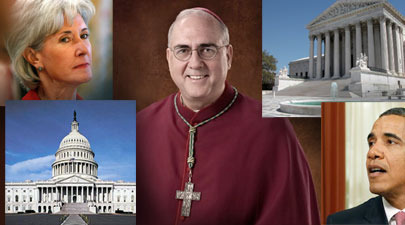
"We didn't pick the time, nor did we pick the fight" | Carl E. Olson | Catholic World Report
An exclusive interview with Archbishop Naumann about the HHS mandate, the Ryan budget, and what the Supreme Court ruling means for the religious freedom fight.
Most Reverend Joseph F. Naumann, D.D., archbishop of the Archdiocese of Kansas City in Kansas, has been an important figure in the U.S. Conference of Catholic Bishops (USCCB) as a member of the Committee on Pro-Life Activities and the Committee on Marriage and Family Life.
He spoke yesterday with Carl E. Olson, editor of Catholic World Report, a few hours after the much-anticipated Supreme Court ruling on the Affordable Care Act, and shared his thoughts about that ruling, the HHS mandate, the national debt, the importance of the principle of subsidiarity, and the role of bishops in articulating and proclaiming Catholic social doctrine.
CWR: What is your initial impression of, or reaction to, the Supreme Court ruling about the health-care bill?
Abp. Naumann: I think it makes even more important now the court challenges that have been filed by many dioceses and Catholic institutions in terms of religious liberty and conscience-rights protections. I think that becomes even more important as it appears this law is going to go into effect. The American bishops as a body have always supported—and I think it is important to say—increased access to health-care for the poor. And so that’s always been a priority for us and if we can make that available to the poor in a way that is financially responsible, then I think we certainly support it.
But there was unified opposition by the bishops to this bill because of its refusal to put in language that would prohibit it from being used for abortion and the refusal to put in conscience-protection language. We’ve seen both of those to be valid concerns with the HHS mandate’s implementation of this bill.
CWR: There were reports from the USCCB meeting earlier this month that you had expressed concern about critical remarks made by certain USCCB committees about Rep. Paul Ryan’s budget proposal. You were quoted as saying that such remarks can create the perception of partisanship, and you made a point about how the principle of subsidiarity has been “neglected in past documents.” Why has the principle of subsidiarity been neglected so often from the pulpit, by bishops? Why do so few Catholics know of it and understand it?
Carl E. Olson's Blog
- Carl E. Olson's profile
- 20 followers




